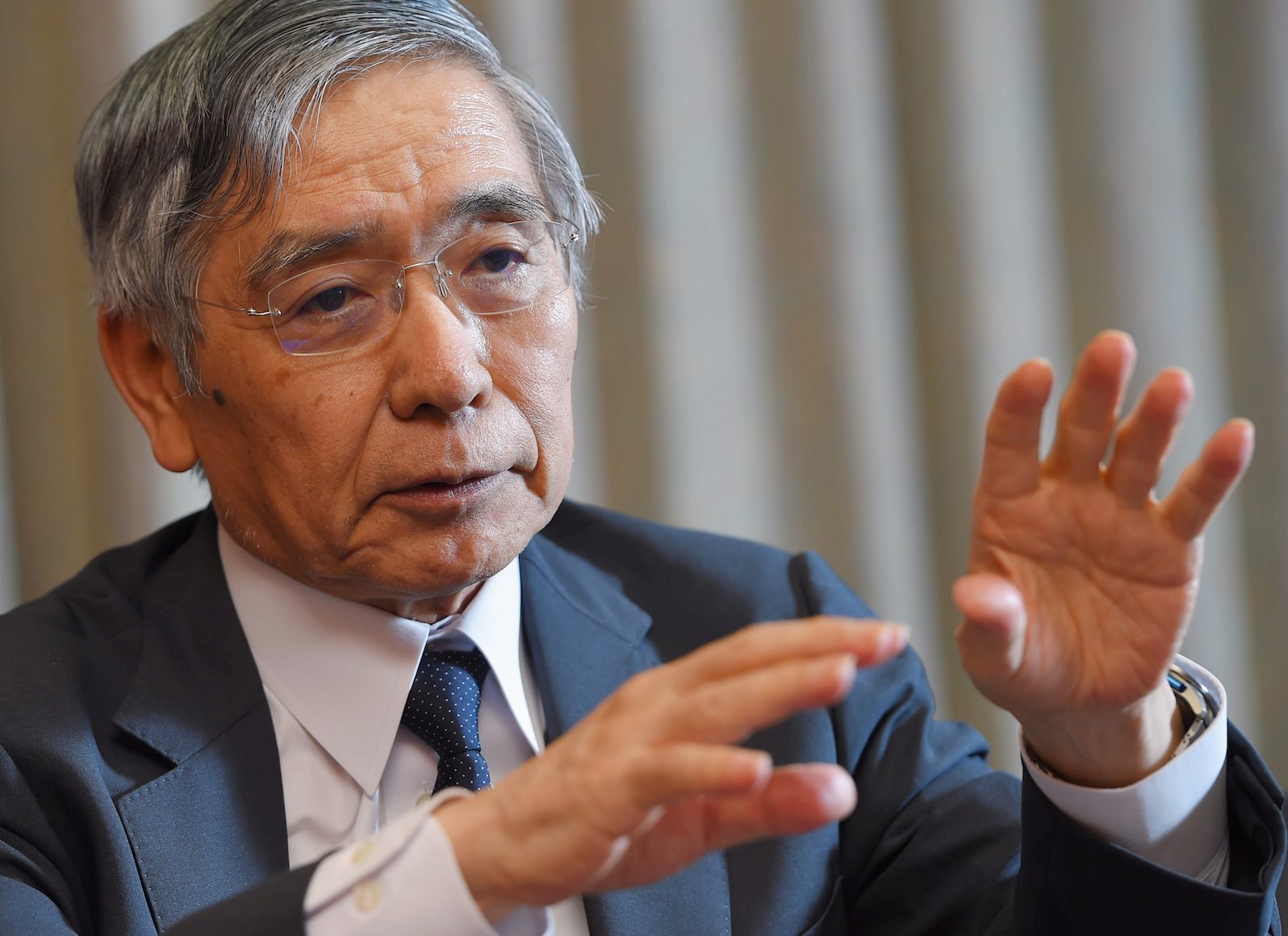Does economic Japanification exist?
It seems that economic Japanification has not caught on in the West as much as might have been anticipated before the pandemic.

While Japan is still burdened by very low inflation, zero policy rates, and more QE, it seems that most other developed countries have broken free. Photo: BoJ Governor Haruhiko Kuroda.
It had long been fashionable to argue that many developed countries were going the way of Japan. Meaning almost permanently low inflation or deflation, policy rates stuck close to, or below zero, mountains of government debt accumulated by central banks and more.
“Japanification” had become a thing … and then the pandemic struck. And now, while Japan is still burdened by very low inflation, zero policy rates, and more QE, it seems that most other developed countries have broken free. A key question for them, and the market is as follows: will Japan eventually catch up, or were other countries never really subject to Japanification in the first place?
There’s a lot of commonalities to inflation; perhaps especially at the moment. That’s because inflation is being pushed up by a combination of supply chain pressures and the demand rebound that comes from the slowly departing pandemic. Japan is subject to these pressures because it is involved in global supply chains and has suffered from the pandemic like everyone else. But while the likes of the US, euro zone, UK and more are seeing these factors push CPI inflation up to between five and seven percent, Japan’s inflation is still barely above zero (and below in non-food and energy terms). Even the BoJ does not see inflation rising to much above a half of the 2% target in coming years. What’s so different?
Mr. Steve Barrow, Head of Standard Bank G10 Strategy said one factor could be that Japanese firms still face significant pressure to keep prices down even as their input costs rise. Of course, companies around the world face this issue as well, but it seems that pre-pandemic speculation that such pressures were now part and parcel of pricing mechanisms in the likes of the US and UK were wide of the mark. For it seems as if firms have clearly pushed cost increases through. In addition, there seems to be no way to lift wages materially in Japan, and that’s despite the strenuous efforts of government policymakers. In contrast, wages have quickly accelerated in the likes of the US and UK. It is not as if Japan has an enormous pool of spare labour, ever ready to step in and fill the void should firms dismiss those workers who dare to claim higher wages. So, here too, just like firms’ pricing strategy, it seems that Japanification has not caught on in the West as much as might have been anticipated before the pandemic.
How are markets pricing all this? In Japan, it is perhaps not too surprising that the market seems priced for inflation to stay very subdued. The Overnight Interest Swap (OIS) curve, for instance does not turn positive until the 8-year tenor. But what’s more interesting, in Mr. Steve Barrow’s view, is that curves in the US and UK – and the euro zone for that matter– still look to us as if they assume Japanification is alive and kicking. OIS curves in the UK and US only put rates up in the 1.5% region a couple of years out. The presumption seems to be that inflation expectations have not become de-anchored at all and it will only take relatively modest rate-hike cycles to bring things back into line again when it comes to prices. But our view is that the inflation genie has escaped from the lamp and stuffing it back inside won’t be as easy as the market makes out. The paradigm used by the market, that runs along the Japanification assumption, needs to be ditched.
“We are not, for one second suggesting that it needs to be replaced by an assumed return to the chaotic inflation dynamics of the 1970s and 80s. But assuming central banks like the Fed and BoE will be able to engineer some sort of Goldilocks ending whereby policy rates rise very modestly and inflation tumbles back meekly to target levels seems wishful thinking as far as we are concerned. The Fed is likely to have to take rates above its definition of neutral (which is 2.5%) and the BoE faces a similar prospect. As well as raising rates we think that policymakers will have to persist with more hawkish invective in order to ensure that markets are properly calibrated for what is to come. As for the BoJ; tightening talk will come one day but there’s little point planning for it just yet”, Mr. Steve Barrow said.








